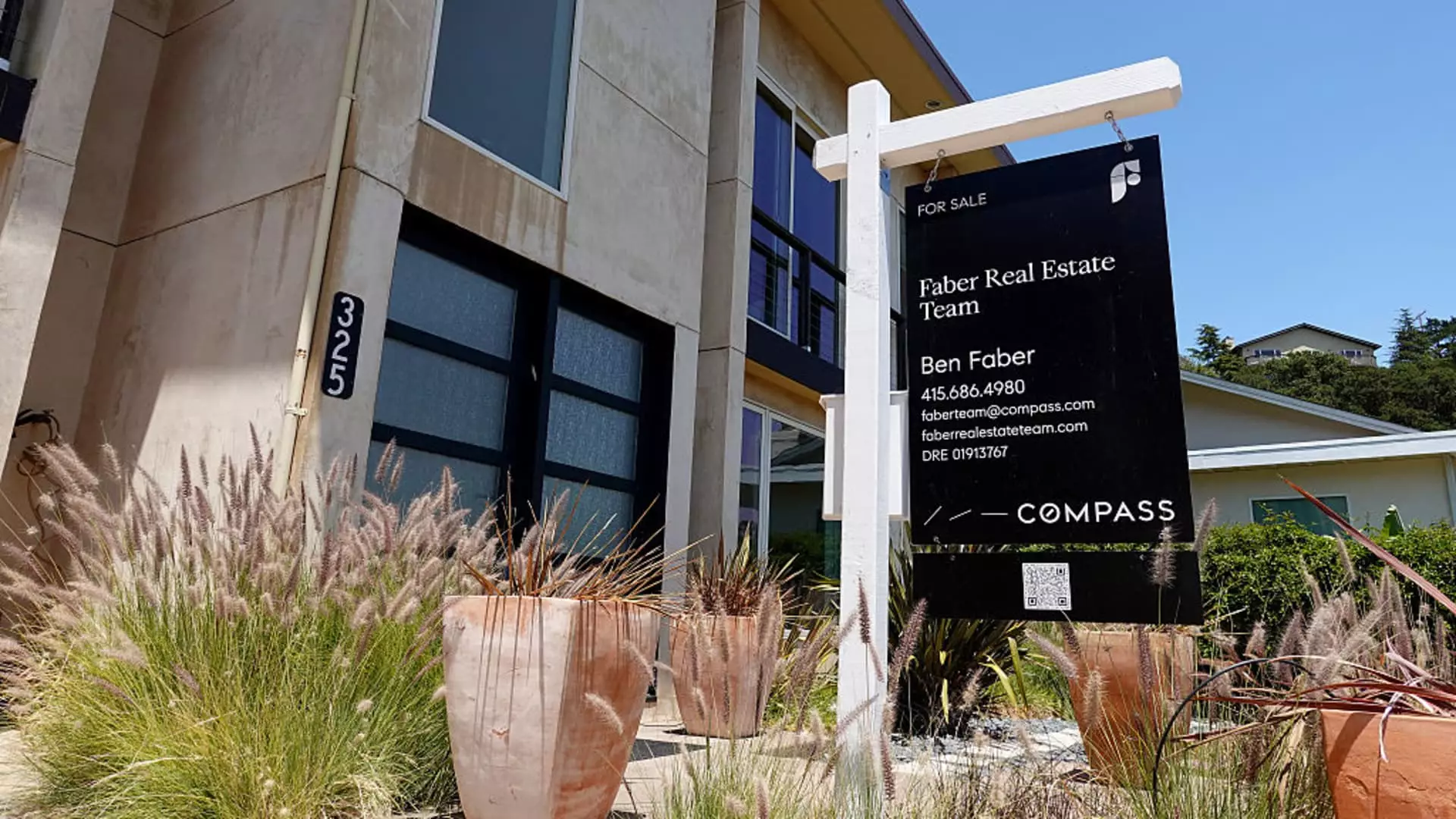In the ever-fluctuating landscape of the housing market, recent trends suggest a significant cooling phase. Home prices, which have seen an impressive rise over the past few years, are now beginning to falter. According to the latest S&P CoreLogic Case-Shiller Index, prices have only surged by 2.7% year-over-year — a stark reduction from the previous month’s 3.4% increase. This limited growth marks the slowest pace we’ve witnessed in nearly two years and raises critical questions about the sustainability of the housing market.
The shift toward slower price appreciation can be traced back to two primary factors: rising supply and decreasing demand. Current data suggest that while new listings are making their way to the market, the appetite among buyers is waning. Furthermore, Parcl Labs recently reported that prices have plateaued nationally compared to last year, leading some analysts to predict prolonged periods of stagnation or even decline.
The Shift in Market Dynamics
What’s particularly troubling is the fading appeal of once-coveted locations. Cities that thrived during the pandemic, such as those in the Sun Belt, now appear to be struggling. In stark contrast, regions in the Midwest and Northeast are experiencing a resurgence, with New York seeing an impressive 7.9% increase in home prices. This unexpected turn of events points to a broader shift in market leadership based on fundamental economic trends rather than speculative bubbles, which could have dire consequences for investors focusing solely on growth.
Nicholas Godec of S&P Dow Jones Indices aptly notes this rotation as indicative of maturity in the market. It appears prices are being driven by tangible economic fundamentals rather than sheer opportunism, leading many potential buyers to reassess their strategies, sentiments, and budgets. Therefore, amid rising mortgage rates and sky-high monthly payments, one must ponder: have the once seemingly bullet-proof pockets of America finally reached their saturation point?
The Impact of Rising Mortgage Rates
Mortgage interest rates are a critical factor in this evolving narrative. As rates have climbed above 7%, the financial burden placed on potential homeowners is heavier than ever before. The National Association of Realtors notes that first-time buyers now comprise only 30% of the home-buying market, a significant dip from the historical average of around 40%. This decline signals a stark shift in buyer demographics, particularly among younger generations who already face economic challenges.
A dangerous consequence of high mortgage rates is the pricing out of substantial portions of potential buyers, effectively paralyzing various segments of the market. With fewer buyers in the fray, even the supply of homes available continues to grow, albeit still remaining below the levels seen before the pandemic. This imbalance yields a precarious situation that threatens to erode any fragile gains seen in cities that once enjoyed robust appreciation.
Seller Psychology and Market Stability
Compounding these challenges are the psychological factors affecting current homeowners. A report from Redfin indicates that only about 6% of sellers risk selling at a loss, a relatively low figure when compared to previous market downturns. Homeowners are often reluctant to relinquish their sub-4% mortgage rates established during the pandemic, further tightening an already constrained housing market.
This seller psychology may contribute to the concept of a price floor, whereby the combination of elevated demand coupled with limited sellable inventory prevents drastic price corrections. While some enthusiasts may perceive this as a stabilizing factor, it might also mask underlying vulnerabilities. If homebuyer demand does not rebound as anticipated, we may find ourselves teetering on the edge of a more severe crisis.
The Warning Signs Ahead
Given the changing dynamics of the housing market — from declining demand to shifting regional pricing trends and financial constraints on buyers — numerous warning signs are flashing. The potential for a substantial downturn looms, especially if interest rates remain high and economic conditions shift. In a landscape where speculation can easily turn into desperation, monitoring these indicators will be crucial for both investors and policy-makers alike.
The current state of the housing market is a tapestry of evolving narratives, driven by foundational shifts, consumer behavior, and economic realities. The interplay between these factors will be pivotal as we proceed through uncharted waters in an increasingly volatile environment.

